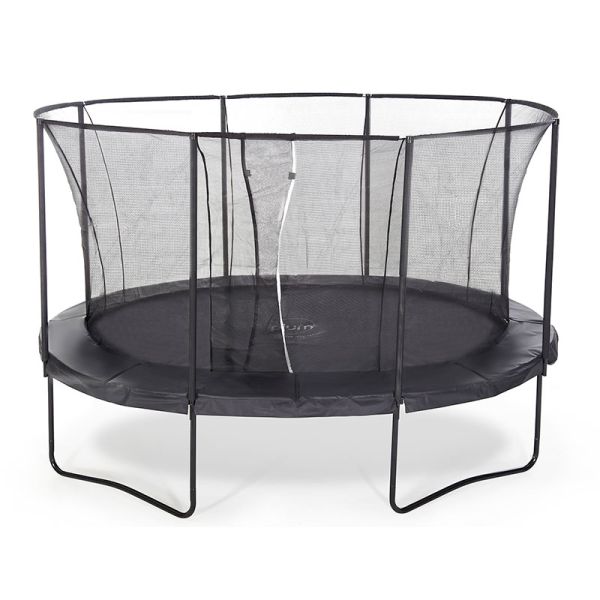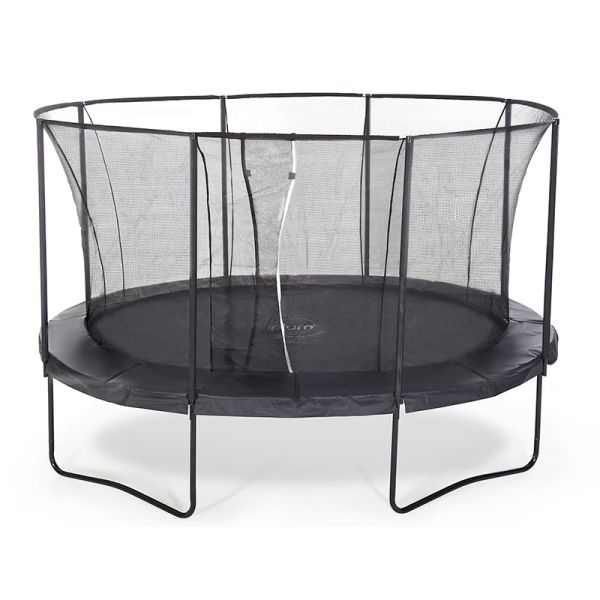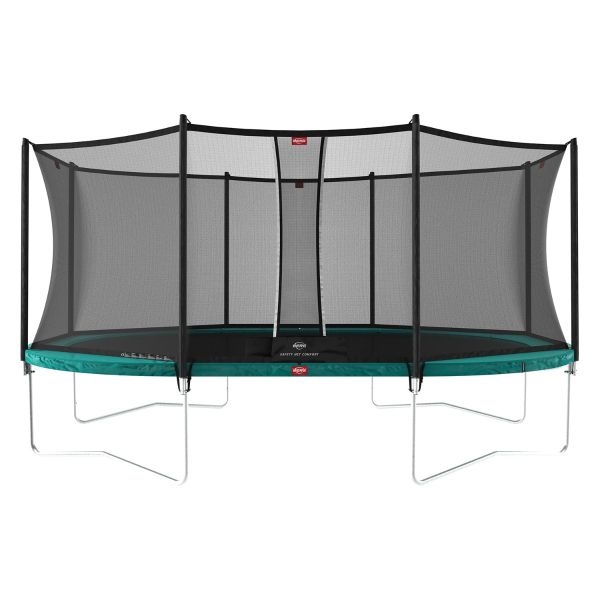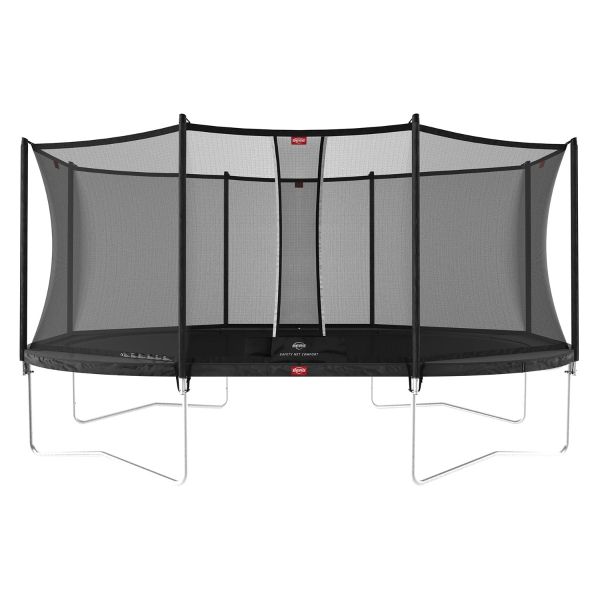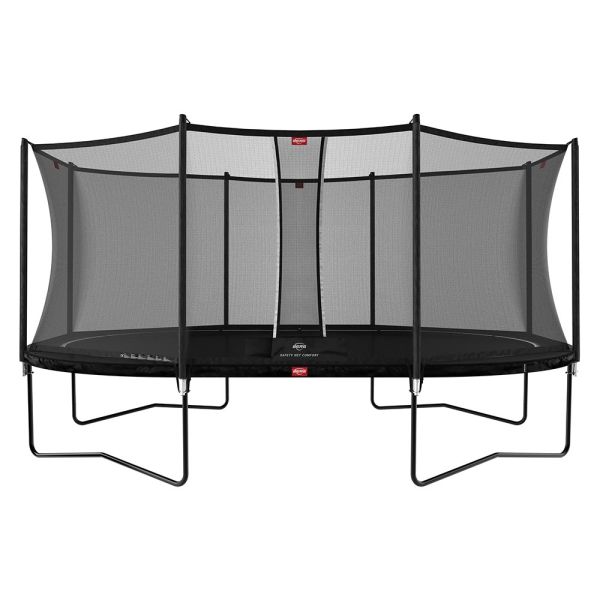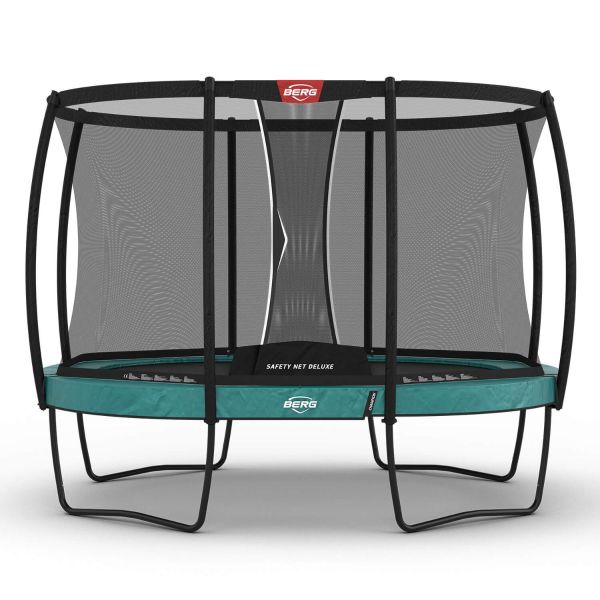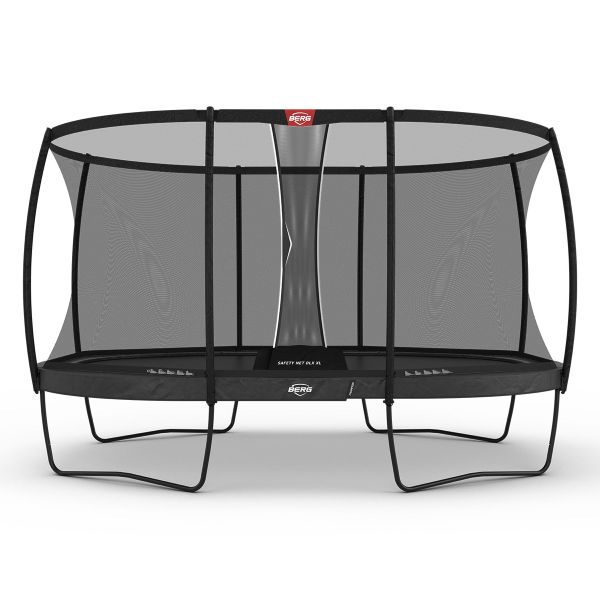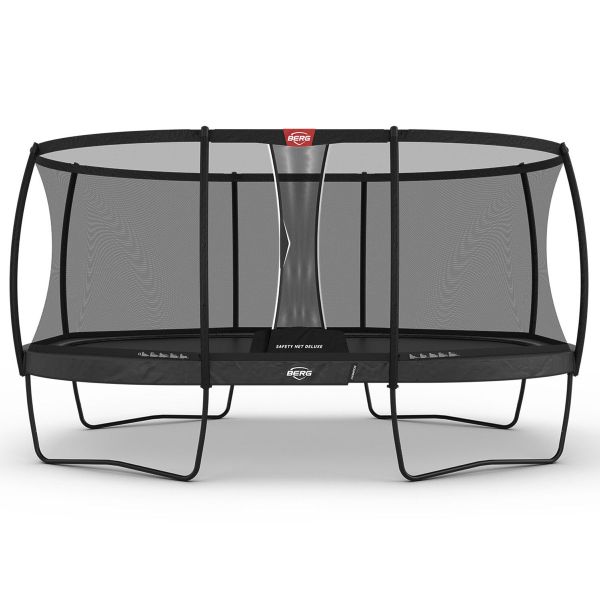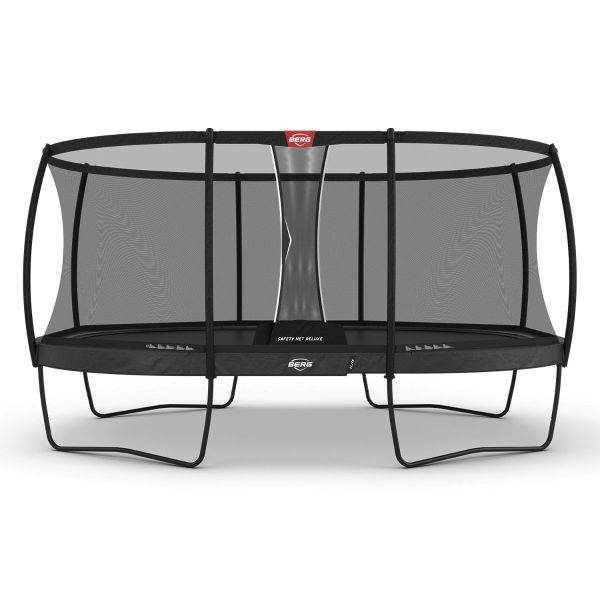• Is an above-ground trampoline better than an in-ground trampoline?
At Wicken Toys, we offer both above-ground trampolines and in-ground trampolines as part of our wide selection, giving you the opportunity to decide which style is best for you. If you’re not sure what exactly the difference is between these trampoline types, we’re happy to explain.
Basically, an above-ground trampoline sits on top of the ground on a raised structure, while an in-ground trampoline is installed with the structure below the ground and the trampoline mat level with the ground surface. They’re both fun and functional options, but which one you prefer comes down to factors such as cost, space, and aesthetics.
Above-ground trampolines offer a higher bounce, but they’re harder to climb onto and the exposed frames can sometimes seem like an eyesore if you’ve carefully curated your garden design. In-ground trampolines are less visible and easier to incorporate into the space, as well as being simple to walk straight onto. The downside is that you can’t bounce as high due to reduced airflow – but this also arguably makes it safer.
Sinking a trampoline into the ground does require spending more money and time on installation and maintenance. You must be able to dig at least 3-4 feet without hitting rocks or utility lines and ensure that the landscape offers suitable drainage. Even though in-ground trampolines reduce the risk of height-related injuries, you should still install a net enclosure for increased safety.
• Which is the best trampoline for my child?
To figure out which trampoline is suitable for your child, you must take their age, height, and weight into account. For example, toddler’s trampolines are much smaller than other models, as they’re designed to allow smaller children to bounce in a safely controlled manner. These are sold for children aged 3 years and up (36 months plus), but once your child grows too big for the product you must no longer let them use it and purchase a larger one instead.
Our children’s trampolines are much larger and generally suitable for children aged 6 years and up. Each trampoline listed on our website will have a specific age and weight guide included in the product information, so be sure to check this before committing to a purchase. For their own safety, no child should use a trampoline if they do not meet the age and size requirements.
At Wicken Toys, we provide a wide range of trampolines for kids in a variety of shapes and sizes. The larger the trampoline, the more space your child will have to bounce around safely in the centre. It’s not recommended for younger children to use rectangular trampolines, as these offer a much larger bounce than round trampolines. Our rectangular sports trampolines are suitable for teenagers aged at least 14 years, who are already familiar with such equipment.
• How long do trampolines last?
The lifespan of a trampoline is largely dependent on the level of maintenance it receives. Children are likely to outgrow toddler trampolines within a couple of years, meaning they’ll need a suitable replacement for their size. You can expect a larger children’s trampoline to last between 3–8 years with proper use and care. This should be long enough for your child to make the most use of it before they outgrow trampolines for kids.
The high-quality kids trampolines from Wicken Toys are sturdily built using robust materials, but this equipment will only endure regular wear and tear for years to come if you look after it properly. This means teaching your child to bounce safely without causing excess strain on the parts, and carrying out regular checks on each aspect of the trampoline. Be sure to teach children to bounce in the middle and avoid jumping towards the sides.
Necessary maintenance tasks include tightening loose screws, applying anti-rust sprays to the springs, and replacing the mat if it wears thin or develops holes. To prevent weather damage from shortening the lifespan of your product, you may want to purchase a trampoline cover. If your child becomes too big, the performance decreases, or the equipment is visibly unsafe, you’ll know it’s time to replace your trampoline.
• How can I make a trampoline safe?
Wicken Toys performs all safety checks at our end to make sure that each children’s trampoline for sale is structurally sound – we would never supply a product unless we can confirm that it is completely safe for children. Once you receive your new trampoline, it’s your responsibility to install the product safely in your outdoor space and supervise your children whenever they use it. Each trampoline should come with the required equipment to secure it in place, but you can also buy tie-down kits separately.
Firstly, you should have measured and prepared a suitable area for the dimensions of the product that you’ve purchased, with a clear safe zone of several feet on all sides. The ground must be flat and level with a shock-absorbing material beneath and around the trampoline, such as sand or bark chips. Never place a trampoline on concrete or tarmac unless you can secure crash mats or an appropriate safety surface on the ground underneath and around it.
If your chosen trampoline doesn’t come with an enclosure included, we recommend purchasing and attaching a suitable safety net enclosure to prevent your child from bouncing off the edges. For above-ground trampolines, you should always install a ladder and teach your children to climb on and off safely. It's also a good idea to remove the ladder when the trampoline is not in use to prevent children from climbing on the product unsupervised.
Do not allow multiple children or pets on the trampoline, and always check for water or moisture before letting your child bounce, as this will make the surface slippery. Teach your child to bounce in the middle rather than near the edges, and do not encourage them to attempt acrobatics such as flips or tumbles. Always consult the instruction manual that comes with your particular model before allowing your child to bounce on the kids’ trampoline.
• What trampoline accessories are available?
As we’ve mentioned above in our trampoline safety tips, it’s wise to add a trampoline ladder to make it easy for your child to access an above-ground trampoline. It’s also a good idea to invest in a trampoline cover to prevent the surface from gathering water during spells of bad weather, because a wet and slippery trampoline is a recipe for disaster.
Keeping your kid’s trampoline securely in place should be your first port of call when you set it up. If you don’t have the equipment to hand, you can purchase tie-down kits from Wicken Toys to anchor the product to the ground. This ensures that the trampoline doesn’t move around while your children bounce on it, and prevents the wind from blowing it away on extremely windy days.
To make things easier for you, we even sell complete trampoline accessory kits including a ladder, cover, and anchoring equipment for a variety of trampoline sizes. We also offer assorted trampoline accessories to add to the fun, including a Trampoline Tidy to keep it clear of toys and a basketball hoop. If you have a Springfree trampoline, your child can even enjoy interactive games when you connect the Springfree Tgoma to your tablet via Bluetooth.
• How to look after a kid’s outdoor trampoline?
Just like any other piece of equipment in any area of life, a kid’s trampoline requires regular maintenance to keep it in the best possible working order and prolong its lifespan. You should have a routine for checking over your outdoor trampoline, if not every week, then at least once a month.
Whenever the trampoline is in use, you should make sure that jumpers aren’t wearing any shoes or jewellery, and that they aren’t exceeding the weight limits. These things can lead to parts of the trampoline tearing or breaking, as well as risking injury to the users.
It’s also a generally good idea to invest in a trampoline cover to protect the equipment when it isn’t in use. While most outdoor trampolines are sturdy enough to endure weather exposure without damage, elements like the sun, wind, and rain can accelerate wear and tear.
The only issue with covers is that you need to remove them periodically to prevent moisture from building up under them, which can lead to mould and rust. As part of your regular maintenance, you should be wiping down the kid’s trampoline parts with damp cloths and/or soft brushes and soapy water, then wiping them dry with a dry cloth.
It’s important to look over and carefully test each part to make sure that it’s working fully as it should. This includes the frame, springs, pad, jumping mat, and safety net. If you notice any issues, such as loose bolts, rusty or broken springs, rips in the mat or cracks in the pads, then you should stop anyone from using the trampoline until the parts can be fixed or replaced. Do not allow anyone to climb or bounce on the children’s trampoline until every part is back in full working order.
• Does the trampoline shape make a difference?
Not only do you have to choose a trampoline size that fits your outdoor space, but you might also be wondering which trampoline shape is the best choice. The truth is that it’s down to your preference – things like frame strength, safety, and bounce quality should be consistent regardless of the shape.
Space limitations are really the most affected factor when it comes to shape, as it’s easier to fit a small round trampoline into a garden corner than a large rectangular one. However, the difference between these two common shapes is that rectangular trampolines have more bounce points across the surface, allowing people to get a higher jump in more places than a round trampoline.
While rectangular trampolines offer a more controlled bouncing experience, round trampolines can be considered safer for younger children, as the single point of gravity always brings jumpers back towards the centre of the mat. Oval trampolines can provide a happy medium between the two.
Weight limitations are also more important than the shape, as teens will be heavier than toddlers, and kid’s trampolines aren’t usually designed for adult use. That said, it’s possible to buy sports models that support more rigorous usage – and these tend to be rectangular trampolines.
When budget is a big concern, you’ll also probably notice that round trampolines tend to be the cheaper options. Of course, the bigger the outdoor trampoline, or the more complex the design, the more it will cost – but across all styles, this shape tends to be one of the most affordable.
• Are kids’ trampoline covers necessary for outdoor trampolines?
If you have an outdoor trampoline, it’s in your best interest to buy a trampoline cover for it. This is especially true if your trampoline is a permanent or semi-permanent fixture, that you can’t easily dismantle and put into storage when it isn’t being used.
Since most outdoor trampolines will be exposed to all kinds of weather while sitting outside throughout the seasons, trampoline covers can make a big difference in preserving their condition. For example, UV from sunlight can wear down the material of the jumping mat, while moisture from rain and snow can cause rust and erosion over time.
Trampoline covers are an easy way to keep the equipment dry and clean. They can prevent the wind from blowing leaves and debris onto the surface, shield against bird droppings, and stop water from building up. All of these things can make a kid’s trampoline unsafe to use, but removing them is as easy as removing the cover – then you can clean it while they play, and replace it afterwards.
Of course, you shouldn’t just put the cover on and leave it there for extended periods of time. This puts the trampoline at risk of developing mould or animal infestations, as you should be taking the cover off periodically to check over and clean the trampoline, even if nobody is playing on it.

